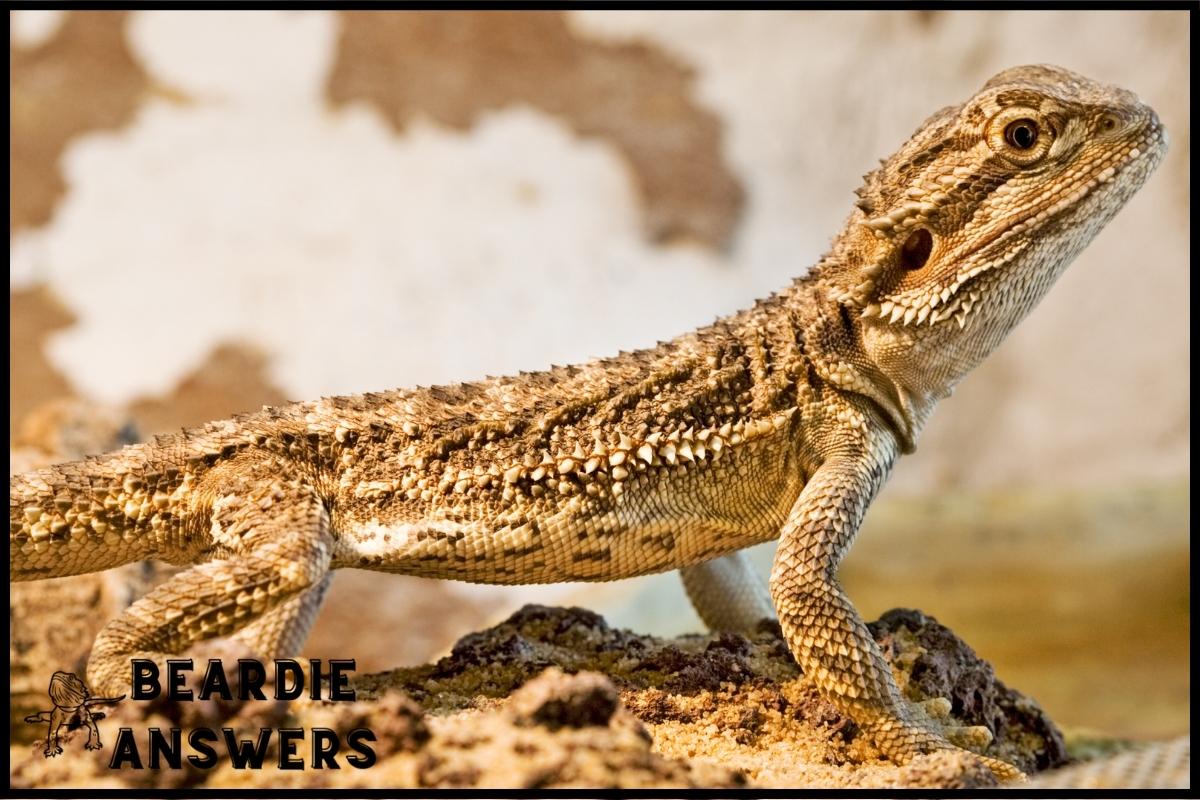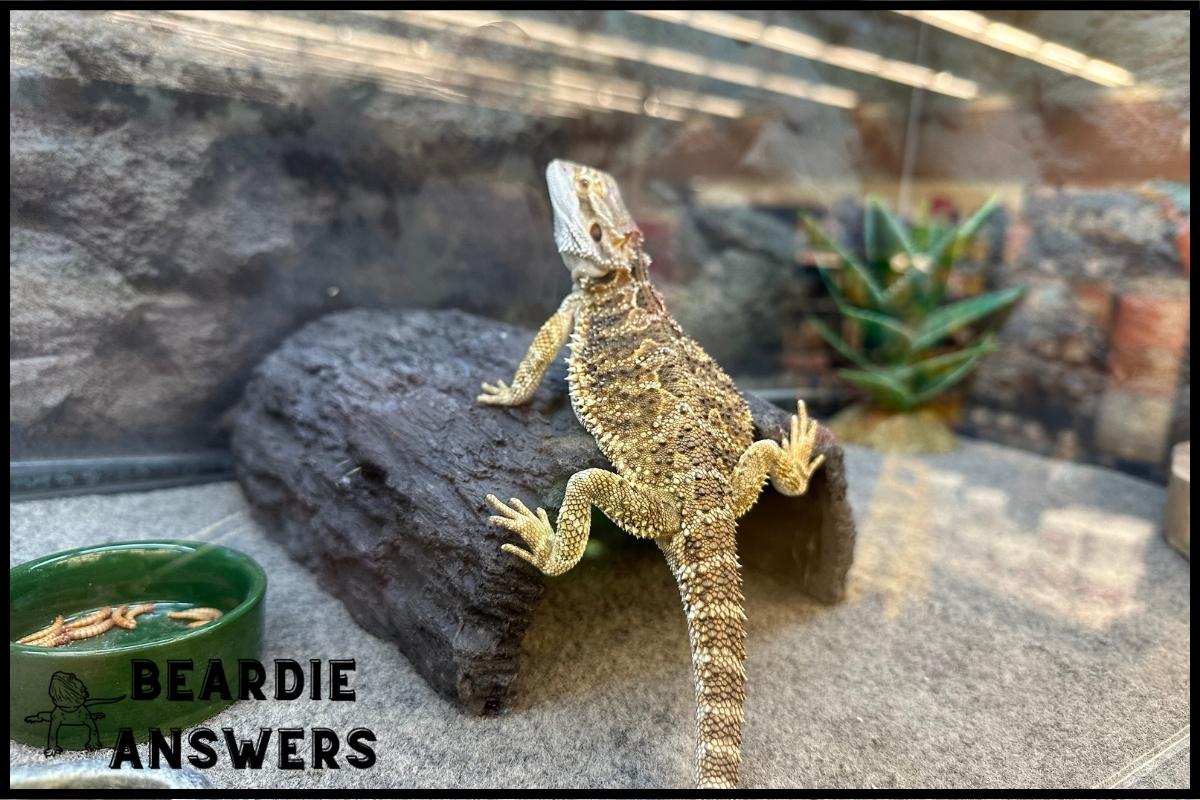Tail rot in bearded dragons can be caused by injury, infection, or poor husbandry. It typically presents as blackened, necrotic tissue at the end of the tail, and can spread if left untreated. Tail rot can be prevented by providing a clean and spacious enclosure, avoiding overcrowding, and ensuring that your bearded dragon’s tail does not become injured or infected.
What You'll Learn
Understanding Tail Rot In Bearded Dragons
Tail rot is an infection that can affect bearded dragons and other reptiles. It is important for pet owners to understand the signs, causes, treatments, and prevention of tail rot in order to keep their reptile healthy.
Dietary requirements as well as environmental conditions are key components when considering the health of a bearded dragon. Improper nutrition can lead to malnutrition and weak immune systems, both of which make it easier for infections such as tail rot to occur. Bearded dragons need a balanced diet with calcium-rich foods like crickets or waxworms and vegetables like collard greens, dandelion leaves, sweet potatoes, bell peppers, and more. Dusting food items with a vitamin/mineral supplement may also be beneficial. Additionally, providing hiding spots within the enclosure will encourage natural behavior while helping reduce stress levels.
Since tail rot is caused by various factors ranging from injury or bacterial infection to poor husbandry practices, it’s important to recognize early symptoms so immediate treatment can begin. These symptoms include discoloration or darkening of the tail tip (which usually starts near the base) and loss of appetite. Taking proper care of your beardie’s habitat — including monitoring temperatures and humidity levels — can help prevent this condition from occurring in the first place.
With that being said, let’s move on and explore what else could cause tail rot in these beloved creatures.
Causes Of Tail Rot
The key to understanding tail rot in bearded dragons lies in identifying the causes. While many of us associate this condition with poor husbandry, there are other factors that should be taken into consideration as well.
From stress factors and diet considerations to physical trauma, it’s important to identify all possible sources of infection when diagnosing a case of tail rot.
Stress is one factor that can lead to an increased risk of developing tail rot. If a dragon is exposed to excessive levels of heat or humidity, or if they experience sudden changes in environment, their immune system may become compromised leading to bacteria entering the bloodstream and eventually infecting the tail area. Additionally, dietary deficiencies can result in weakened immunity which makes them more susceptible to infections like tail rot. As such, it’s important for owners to provide their beardies with a nutrient-rich diet including fresh vegetables and proteins as well as calcium supplements on occasion.
Physical trauma also plays an important role in causing tail rot. Injuries caused by barbed wire cages or collisions with glass tanks are common occurrences for reptiles kept in captivity and these injuries have been known to cause bacterial infections resulting in full blown cases of tail rot over time. It’s therefore essential for owners to ensure that their pet has enough space so that ample room is provided for healthy movement within its enclosure.
To prevent further injury from occurring, make sure any sharp objects are completely removed from your dragon’s habitat and take extra care when handling them – especially during shedding season!
Taking preventive measures like providing proper nutrition and creating an appropriate living environment will go a long way toward keeping your beloved lizard safe from harm – both inside and out – while minimizing the possibility of developing serious conditions like tail rot along the way.
Physical Trauma
Physical trauma is one of the leading causes of tail rot in bearded dragons. This can be caused by either a direct injury or an indirect one, such as when the dragon gets its tail caught on something and it’s pulled off.
Injuries to the tail range from minor abrasions that heal quickly to severe lacerations that require amputation. In some cases, even small injuries may lead to infection if they are not properly treated with antibiotics and antiseptics.
The most common symptoms associated with physical trauma include:
Bleeding
- Minor: Can usually stop without medical intervention
- Major: Requires veterinary care
Swelling
- Localized: May indicate infection
- Generalized: Indicates serious injury or infection
Tail shedding/rotting
- Shedding due to stress or health problems
- Tail amputation may be necessary in extreme cases
Tail rot resulting from physical trauma can take weeks or months to heal completely, depending on the severity of the injury. During this time, it’s important to provide your dragon with regular vet check-ups so any underlying issues can be addressed promptly.
With appropriate treatment and careful monitoring, most dragons will make a full recovery. Moving forward, bacterial or fungal infections are another potential cause of tail rot in bearded dragons.
Bacterial Or Fungal Infection
Tail rot in bearded dragons can be caused by a bacterial or fungal infection. According to recent studies, over 30% of all cases of tail rot are due to bacterial and/or fungal infections acquired from an overcrowded environment.
The most common bacteria associated with these infections is Staphylococcus spp., which thrives in unsanitary conditions. Fungal infections, such as those caused by Aspergillus spp., may also occur if the dragon’s enclosure or food sources have been contaminated with spores. Both types of infections can result in necrosis (tissue death) that affects the base of the tail and other parts of the body. Treatment typically involves antibiotics for bacterial infections and antifungals for fungal infections; however, prevention is always preferable since both types of infection can become systemic and cause serious health problems.
In addition to bacterial and fungal illnesses, tail rot in bearded dragons can also arise from poor husbandry practices such as improper nutrition or inadequate temperatures. Without proper care, any dragon – regardless of its age – will be more prone to developing skin conditions like tail rot that could lead to complications down the road. Therefore, it’s important for owners to understand what constitutes good husbandry so they can provide their pets with the best possible living environment. With this knowledge, they’ll be able to optimize their pet’s overall wellbeing while reducing their risk of contracting diseases like tail rot. Transitioning now into discussing poor husbandry practices as a potential cause of tail rot…
Poor Husbandry Practices
When it comes to tail rot in bearded dragons, inadequate nutrition and improper cage maintenance are two key aspects of poor husbandry practices that must be addressed.
Without proper diet and care, these reptiles can quickly become prone to injury and infection which can cause tail rot.
Inadequate Nutrition
When it comes to poor husbandry practices, inadequate nutrition can be particularly damaging for bearded dragons.
If a dragon is not being fed the right balance of vitamins and minerals, including enough calcium in their diet, this can cause serious health issues such as tail rot.
A lack of proper care when providing food or supplements also puts them at risk as they won’t be getting all the nutrients they need to stay healthy.
Without access to an adequate diet, these lizards may suffer from malnutrition that leads to symptoms like weight loss and weak bones – both of which are linked with tail rot.
Improper Cage Maintenance
In addition to dietary needs, improper cage maintenance can also be a major cause of poor husbandry practices. Not providing the right environment for a bearded dragon can lead to an array of health issues due to environmental stressors.
This includes not having proper temperatures, humidity levels and lighting as well as making sure their enclosure is kept clean and free from parasites or other contaminants. Without taking these steps, your dragon won’t be able to thrive which can then negatively impact its overall wellness.
With this in mind, it’s important that you maintain their habitat regularly so they have the best chance of staying healthy and happy.
Preventing Tail Rot In Bearded Dragons
Tail rot is a serious condition in bearded dragons that can be caused by injury, infection or poor husbandry. To prevent it from occurring and to keep your bearded dragon healthy, there are some important tips you should follow:
- Monitor the temperature of the habitat and make sure it is appropriate for a bearded dragon’s needs.
- Avoid overfeeding as this can cause digestive problems which could lead to tail rot.
- Ensure stress management through regular playtime with their owner, socialization with other animals, and providing enough hiding places within the enclosure so they have access to a safe space when needed.
It is also important to regularly inspect your pet for signs of illness such as loss of appetite, lethargy, changes in behavior and discolored patches on or around the tail area – all of which may indicate an underlying infection or injury that requires veterinary attention immediately.
Taking care of these simple steps will ensure that your beardie stays happy and healthy!
Conclusion
Tail rot in bearded dragons is a serious condition that can be caused by physical trauma, bacterial or fungal infection, and poor husbandry practices.
It’s up to us as owners to make sure we provide our lizards with the best care possible so they don’t suffer from this debilitating illness.
Symbolically speaking, tail rot can represent an unhealthy lifestyle for both humans and animals alike; if left unattended it will only worsen over time.
By taking preventative steps such as providing proper nutrition, maintaining clean living conditions, and limiting stress on our pets, we can ensure their overall health and well-being for years to come.

Hi! My name is Bryan, I am the “one behind the words” here are BeardieAnswers.com. I believe that providing quality care and nutrition is the best way to ensure the health of your pet. Every beardie is special and deserves the best care and attention. If you have questions about your bearded dragon, please don’t hesitate to ask! View My Full Author Page




